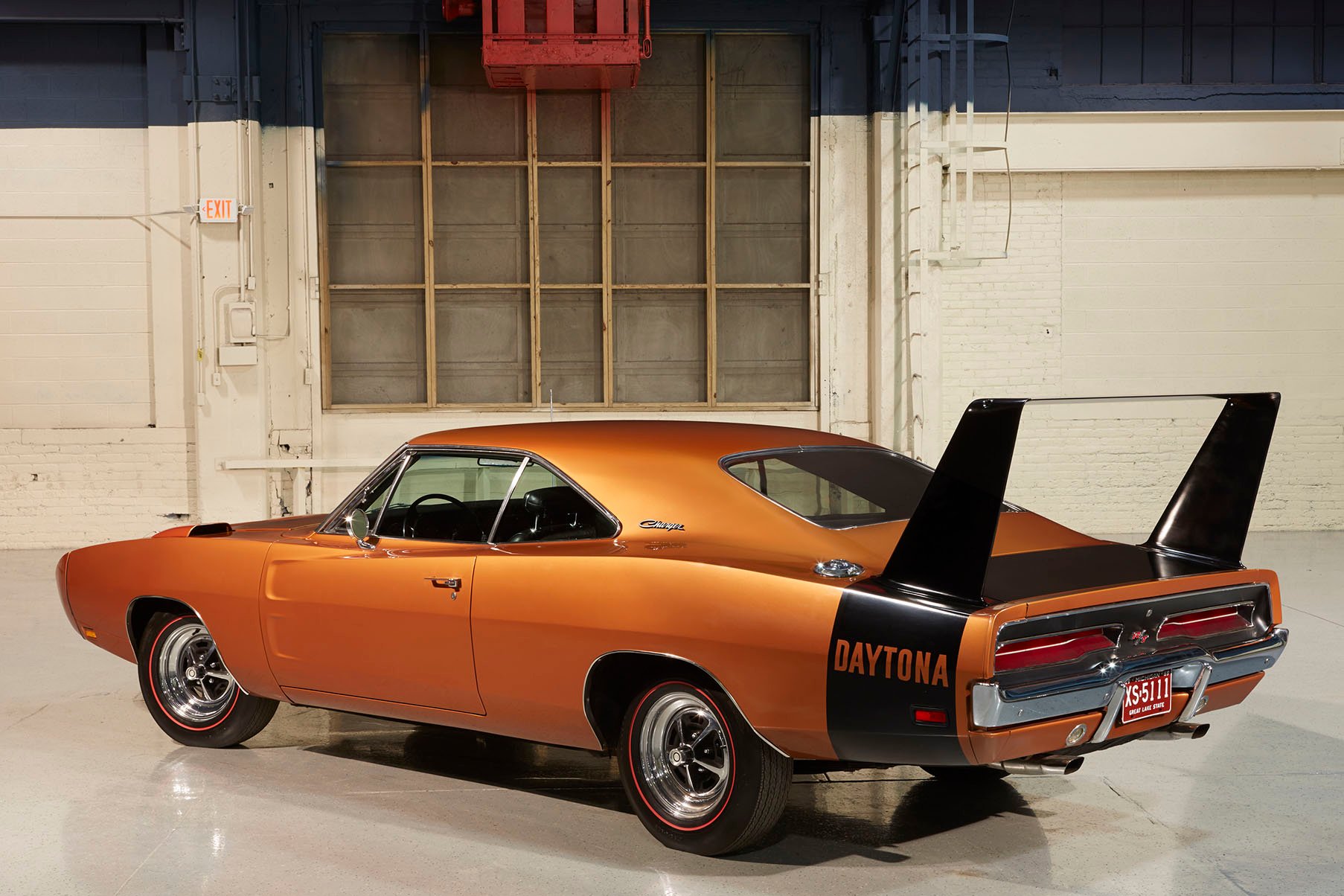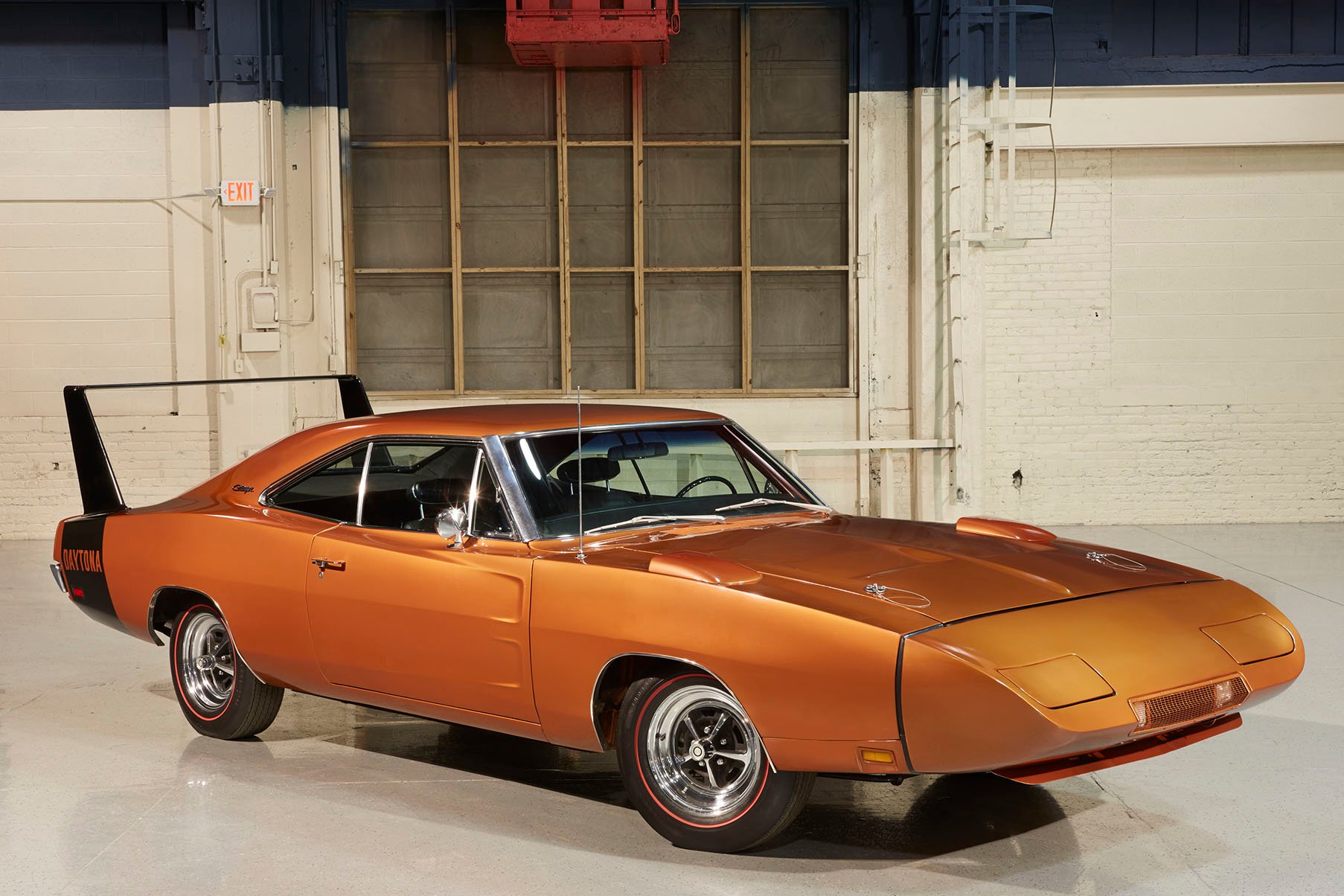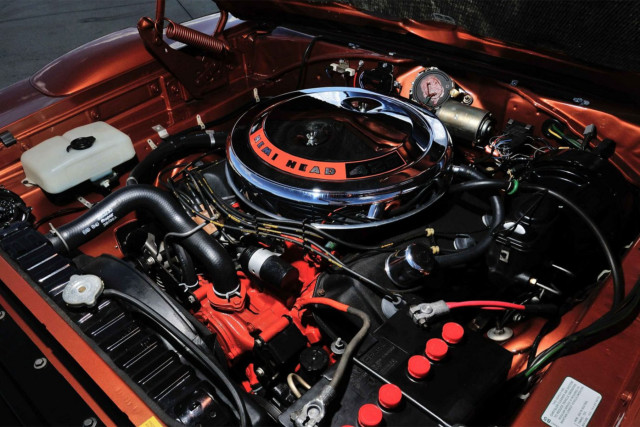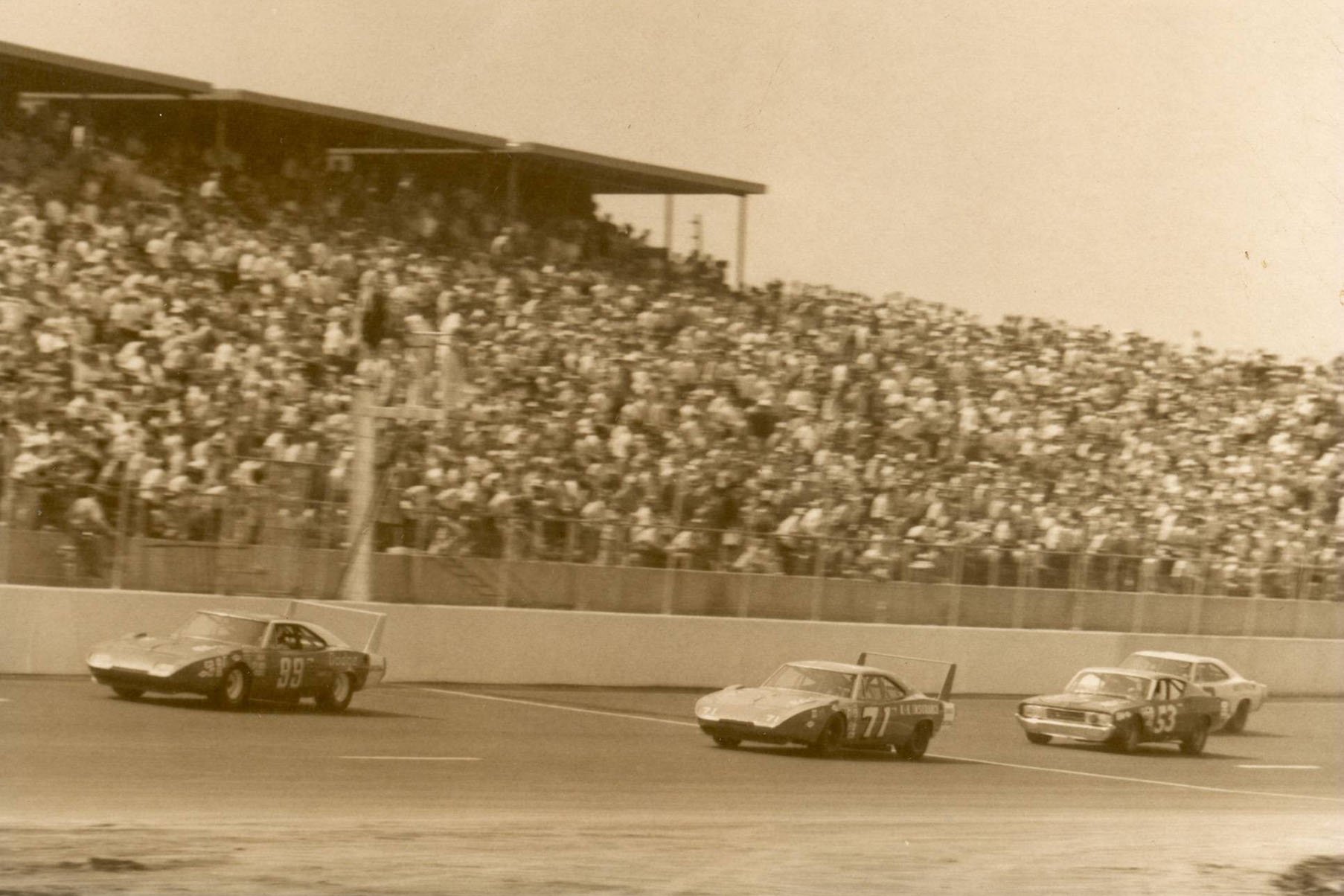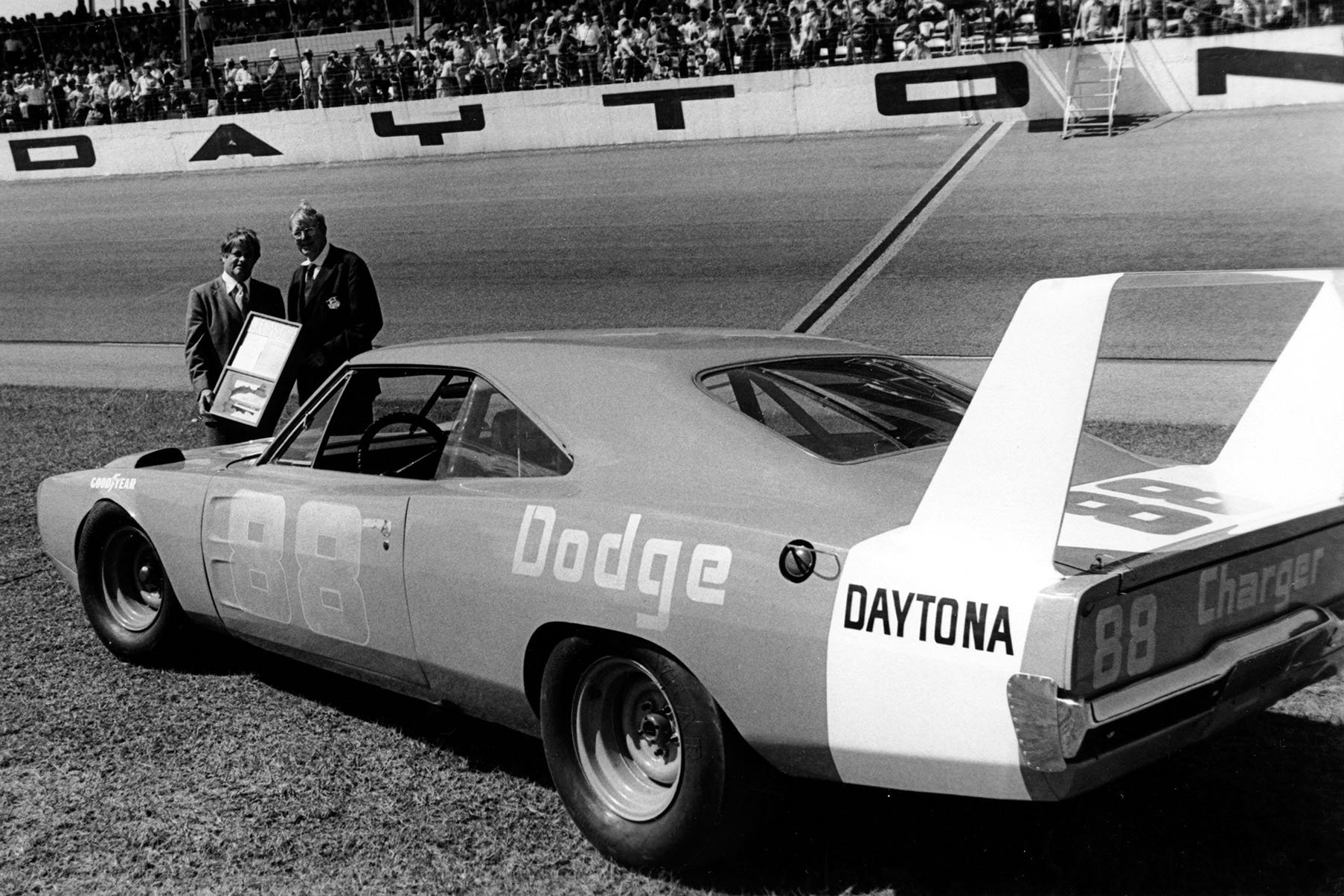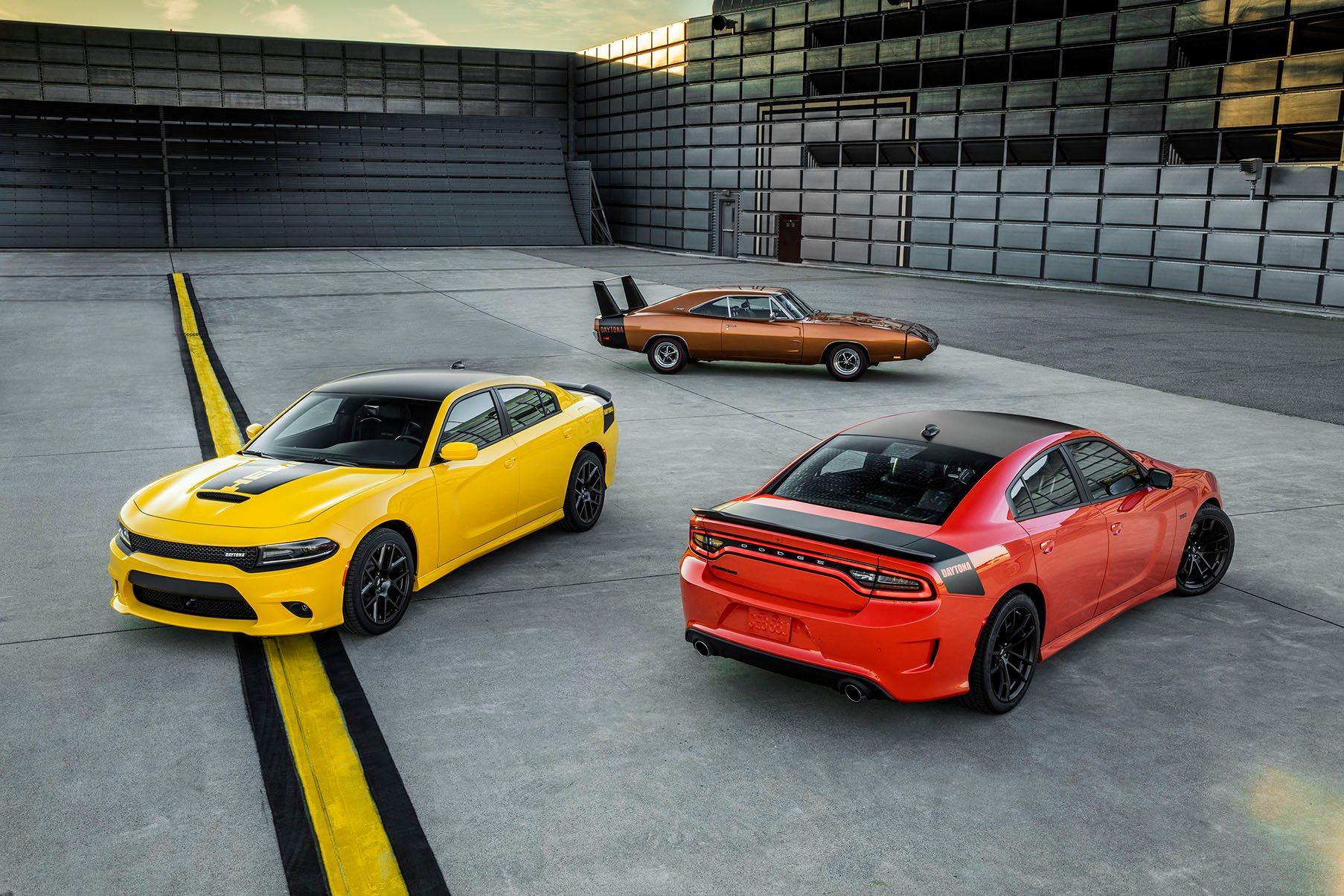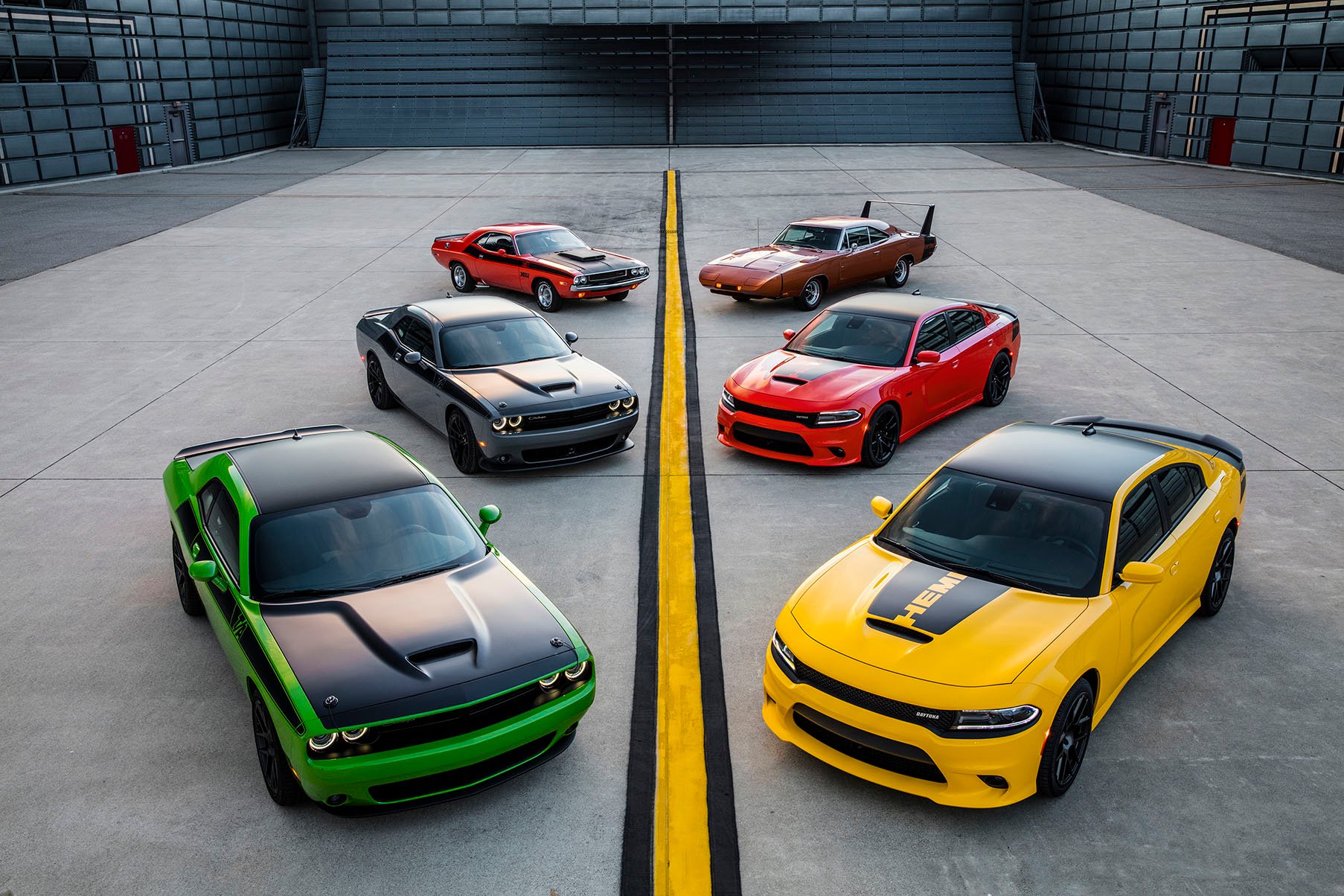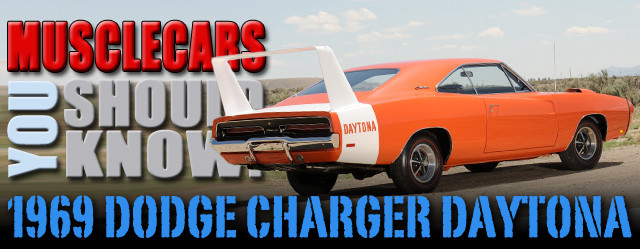 While muscle cars have never been known for their subtlety, and Mopars have traditionally sported some of the boldest designs out there; Chrysler took their approach to another level when they unleashed the Dodge Charger Daytona on the public at the height of the muscle car era in 1969.
While muscle cars have never been known for their subtlety, and Mopars have traditionally sported some of the boldest designs out there; Chrysler took their approach to another level when they unleashed the Dodge Charger Daytona on the public at the height of the muscle car era in 1969.
Decked out with wild aero that included a pointed nose cone and a massive wing that extended nearly two feet off the rear deck, the Daytona looked like no other car on the street at the time.
Though they're sought-after collector cars now, the wild aero kit of the Charger Daytona and its corporate cousin, the Plymouth Superbird, proved polarizing to the buying public - folks either loved them or hated them. Regardless of aesthetic merit the bodywork served a purpose, and it proved so effective at its mission that it was deemed too good by NASCAR officials. Images: FCA
The seemingly outlandish body kit was the direct result of function over form: Its drag coefficient of just 0.28 stood as the slipperiest production car made for decades. Designed from the outset as a homologation special, the Daytona was built to replace the Charger 500 in Dodge’s stock car racing efforts, the latter of which had been struggling to stay competitive on NASCAR’s super speedways.
The company’s efforts would prove successful – perhaps a little too successful, as history would later show. However, the Daytona’s iconic look, rarity, and legendary performance would cement the model in a position of grandeur in the annals of musclecar history, and the nameplate has continued to see use in Dodge’s product portfolio to this day because of it.
Purpose-Built Winged Warriors
While the standard second generation Charger’s bold look was a hit on the street, its squared off front end styling proved troublesome for use in high speed racing, as the recessed grill in particular created quite a bit of aerodynamic drag.
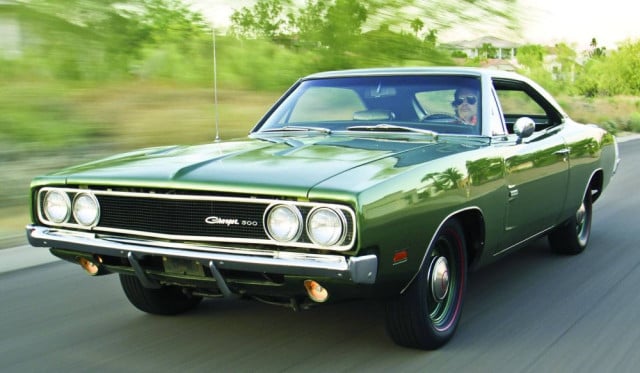
The 1968 Charger 500 was Dodge’s first attempt at making the second-generation Charger more aerodynamic. Though it improved drag over the standard car, it was not enough to go toe to toe with the strongest competition in stock car racing at the time. Image: Hemmings
Dodge’s initial solution to this was the Charger 500 for 1968, which did away with the hideaway headlight configuration and smoothed out the rear C-pillar section for better aero. But it simply wasn’t enough, and cars like the Ford Torino Talladega and the Mercury Cyclone Spoiler II continued to leave the Mopars in the dust on high-banked oval tracks across the country that season.
Frustrated, Dodge engineers went back to the drawing board, spending months in research and development. The final design called for a nose cone that was 18 inches long and a rear wing that was 23 inches tall, the latter of which was chosen in order to put the wing in “clean” air and offered the additional bonus of not interfering with the use of the trunk lid. The nose cone would provide the front end with 1,200 pounds of downforce while the wing would put an additional 600 pounds of downforce on the rear and also provide directional stability due to its deeply splinted sides.
A mere 503 Charger Daytonas were built for the 1969 model year, its sole year of production. Among those 433 were equipped with the 440 Magnum V8 (139 four-speeds and the rest with the Torqueflite automatic), while the remaining 70 cars were equipped with 426 Hemi power (22 four-speeds and 48 automatics). Images: FCA
Although Dodge’s styling department was said to want to make changes upon first glance at the Daytona prototype, they were told by Chrysler exec Bob McCurry that function would prevail over form for this particular model, and the design showed incredible promise during testing at the Chrysler Proving Grounds in Chelsea, Michigan.
Introduced as a limited production model for 1969, the Daytona came standard with a big block 440ci V8 mated to either a Torqueflite three-speed automatic or a four-speed manual gearbox, while a 426ci Hemi V8 was optional.
The homologation special hit showrooms in the summer of 1969, shortly before the start of that year’s NASCAR race season. The engineering team’s efforts would prove effective on track, as a Daytona would win its first racing outing at the inaugural Talladega 500 that year and go on to win five more races between the 1969 and 1970 race seasons, while its winged corporate cousin, the Plymouth Superbird, would rack up an additional eight race wins in the 1970 season alone.
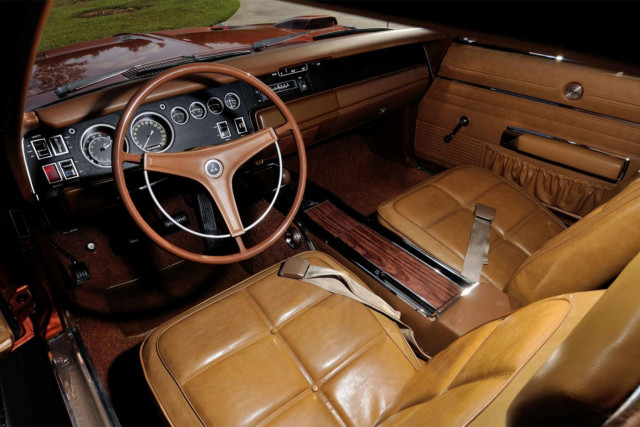
While the bodywork might have suggested otherwise, the inside of the Charger Daytona was fairly typical stuff for Mopar B-bodies of the day. Image: Mecum
The cars’ superior design was perhaps best illustrated when NASCAR racer Buddy Baker took the No.88 Chrysler Engineering Dodge Charger Daytona to Talladega Superspeedway on March 24th, 1970 and became the first driver in NASCAR history to break the 200 mph mark, reaching a peak of 200.448 mph during a day of lapping sessions at the raceway, breaking both the track record and world record in the process.
The Charger Daytona was a strong competitor in NASCAR right out of the gate, taking home the win at its first race in the 1969 season. By the time the Plymouth Superbird joined the fray for the 1970 season the Chrysler B-bodies were so dominant that NASCAR officials had to intervene in order to bring some parity back to the series - but not before a Daytona would break the 200 mph barrier during testing at Talladega, setting both track and world records. Images: FCA
Because of their dominance in the series and the unprecedented speeds they could achieve, NASCAR officials finally put the kibosh on the Daytona and Superbird when they effectively banned the cars from the series after the 1970 series by adding a rule which stated that any winged cars campaigned in the series could not run an engine larger than 305 cubic inches.
Legacy
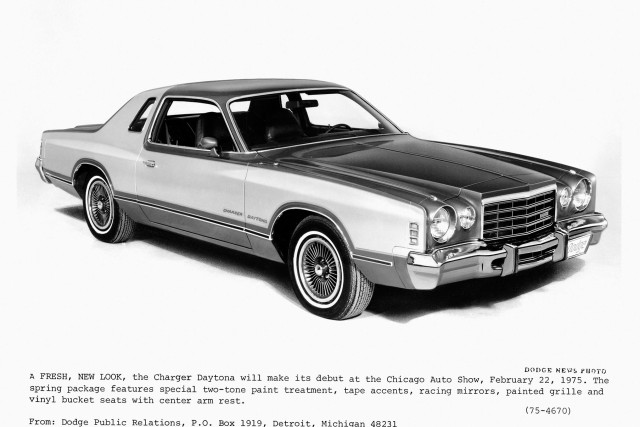
Six years after the original the Charger Daytona bowed out the name would return, though the muscle car landscape had clearly changed dramatically by then. Essentially a re-badged Chrysler Cordoba at that point, the Charger’s 400ci V8 made 200 horsepower. Image: FCA
Just 503 road-going examples of the Charger Daytona would be built in total in its one-year production run, and a mere 70 of those would be equipped with the top-spec 426 Hemi motor. Considering the model’s bright but brief motorsport history and production rarity, it comes as little surprise that both 440 and Hemi powered Daytonas fetch a healthy sum in the collector car market today, with prime examples hauling in well over a quarter million dollars at auctions in recent years.
Though the Charger Daytona’s initial production run was limited to the 1969 model year, the Daytona name would return to Charger models in subsequent years.
Starting with a brief revival for the 1975–1977 model year Chargers, essentially as an appearance package; the Charger Daytona nameplate would see a more earnest revival decades later when it was applied to the then-new 2006 Dodge Charger, where along with the requisite appearance modifications, the Daytona models would receive additional performance by way of upgraded intake and exhaust systems.
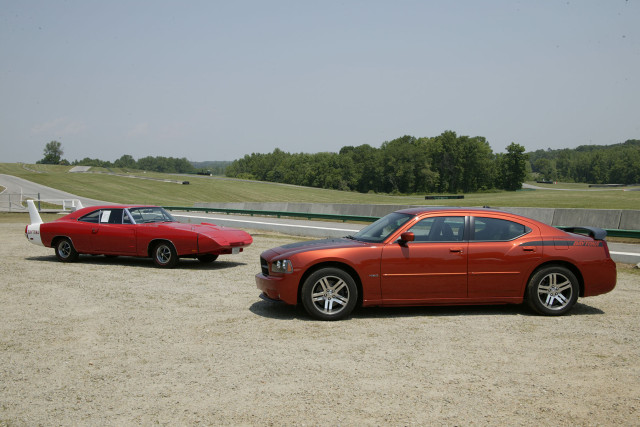
It would be almost three decades before Dodge would revive the Charger Daytona moniker again, this time applied to a performance-tuned version of its full sized sedan. Although still a far cry from the purpose of the original, the new package did bring added capability to go along with its appearance upgrades. Image: FCA
The 2017 model year sees the latest iteration of the Charger Daytona name. Available in both 5.7-liter V8 and 6.4-liter V8 powered R/T models, the latter of which brings a number of enhancements down from the top-spec SRT 392 and SRT Hellcat models, including six-piston Brembo brakes, wider 20 x 9.5-inch forged aluminum wheels and high performance tires, along with an electronically controlled active exhaust system and cold air intake.
The latest iteration of the Charger Daytona debuts for 2017 alongside the Challenger T/A in both 5.7-liter V8 and 6.4-liter V8 flavors. For the Scat Pack-based models, both the Charger Daytona and Challenger T/A receive some go-fast goodies from their respective SRT models, including upgraded brakes, wheels, and tires. Images: FCA
Although both the 5.7-liter and 6.4-liter iterations of the modern Daytona boast unique appearance tweaks among the various Charger models currently on offer, some purists bemoan the fact that, in contrast to the original Charger Daytona from 1969, very little of the package is comprised of bespoke components made exclusively for this model. This makes the latest iteration an exercise in form over function to some degree instead of the other way around, as was the case with the original cars.
Still though, we can’t help but encourage Dodge’s efforts to revive the best elements of its rich performance heritage in the modern era. If the end result is more fast Mopar muscle cars on the road, that’s alright by us.





